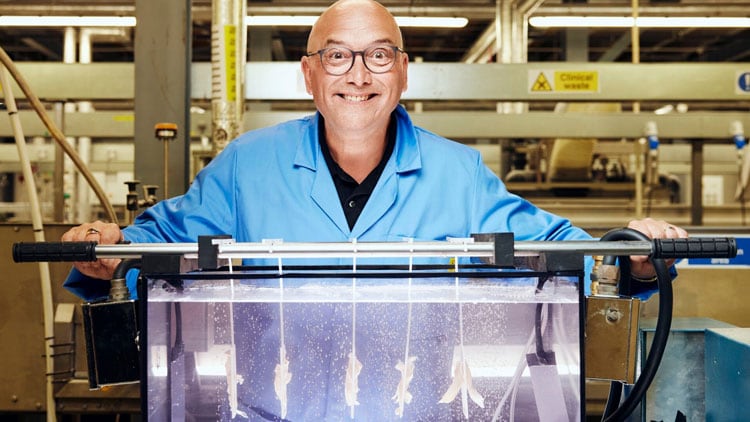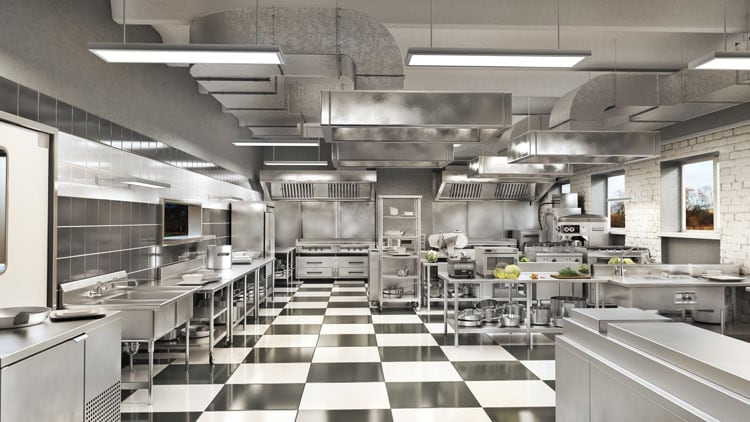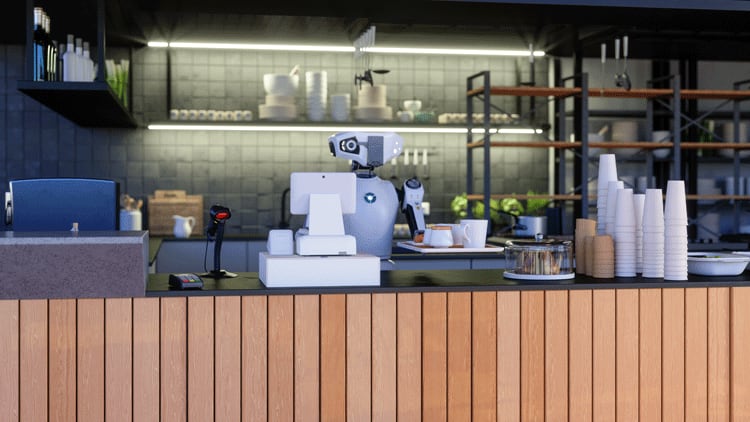1. The proliferation of lab-grown meat
Earlier this month, TV personality Gregg Wallace (pictured above) presented one of the timeliest food documentaries of the year so far. Called The British Miracle Meat, the Channel 4 show followed the former greengrocer as he visited a secret Lincolnshire factory belonging to Good Harvest, an innovative food company providing cheap meat to consumers. The twist is that the meat itself has been harvested from the cells of humans, with Britons on the breadline encouraged to earn extra cash by having chunks of themselves surgically removed and grown into cuts of steak, burger patties and rings of sausages. At one point Michel Roux Jr. even taste tests some of the human steaks and gives them a resounding thumbs up.
Of course, the actual twist is that (spoiler alert) the entire doc is bogus, a satire skewering Government inaction that's designed to leave viewers wondering how dark things might get. How successful it is in its mission is up for debate, but there’s no denying it’s a sinister curiosity, and one firmly rooted in reality. We may not be harvesting humans, but lab grown AKA cultured meat is undoubtedly going to become a significant element within our food chain in the decades to come. Cultured meat is produced using tissue engineering techniques pioneered in regenerative medicine, and has been touted in certain quarters as having the potential to address the environmental impact of meat production, animal welfare, food security and human health.
For those thinking this all sounds a bit Black Mirror, just look at the US, where the Government recently agreed to allow two companies to sell chicken meat that has been grown in a laboratory. It makes the US only the second country in the world to approve the sale of lab-grown chicken, after Singapore. Josh Tetrick, chief executive of Good Meat, one of the two companies given permission by the US Department of Agriculture to produce and sell cultured chicken, says that the approval is a ‘major moment for our company, the industry and the food system’.
It’s likely to be a very long time before these products are widely available on supermarket shelves anywhere in the world, but it certainly reflects an area of growing interest across the sector - both for carnivorous and plant-based businesses. Take KFC. Back in 2020, the fried chicken chain collaborated with a biotech research lab in Moscow to develop a hybrid nugget made from a combination of cultured chicken cells and plant-based ingredients. And then there’s Dominique Crenn, the multi-Michelin-starred chef and restaurateur, whose San Francisco restaurant Bar Crenn has become one of the first in the US to serve cultured chicken on the menu, marking the first time any meat has been served in her restaurants since 2018.
Supplier comment Lanchester Wines
With the recent changes to UK alcohol duty (from 1 August 2023, alcohol duty is based on ABV) and further changes planned for 2025, Restaurants of the future will increasingly be looking to lower ABV drinks to ensure they remain competitively priced. UK wine importers, such as Lanchester Wines, are already working with winemakers to harvest early, therefore reducing ABV without compromising taste.
Sparkling wines will become increasingly attractive as the new duty rate reduces the cost of a 6x75cl case (for sparkling wines with an ABV between 11.5% and 14.5%) by £1.12 per case. The reduction is even greater for typically lower ABV wines, such as Prosecco, while some consumers will take advantage of this price drop to upgrade from a sparkling wine to Champagne.
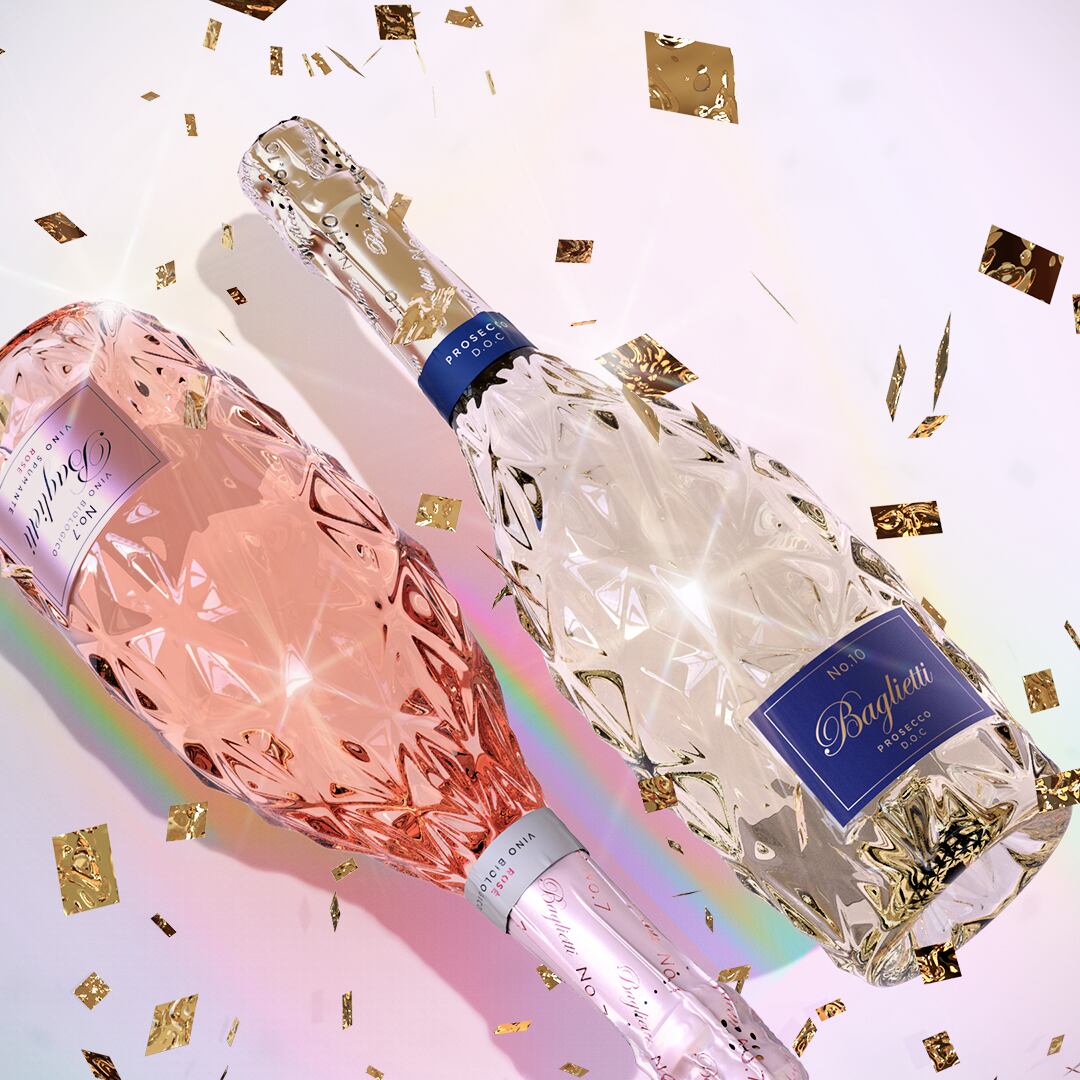
For more information contact Lanchester Wines here.
2. 0% ABV wines that are worth drinking
While restaurants will still likely have to kiss a few frogs before finding a palatable non-alcoholic wine, quality is increasingly rapidly. Alarmed by the marked decline in young people drinking, serious winemakers are now entering the fray. “I’ve been in France a lot recently, there is a lot of chat within the wine industry about how it can stay relevant to the younger generation. They are aware of the huge strides the beer industry has made in creating products for people that don’t want to drink alcohol but are still looking for a high-quality experience,” says Paul Morgan, the co-owner of Hove wine bar and restaurant Fourth & Church.
He is currently listing a trio of German non-alcoholic wines from different producers including the famed Weingut Dr Loosen that are all made with Riesling. “It’s an excellent grape for non-alcoholic wines because it’s high in acid and sugar and naturally creates wines that are low in alcohol,” he says. All three of the wines are dealcoholised by vacuum, thereby preserving the wine’s character.
Earlier this year, the London Wine Fair showcased 25 different sans-alcohol drinks brands in partnership with mindful drinking movement Club Soda. The wine brands features included Noughty, Wednesday’s Domaine, Bolle and Zeno Wine. “Sales of alcohol-free wine have grown 20% in the first quarter of 2023, and we expect that demand to rise. If you don’t have a curated range of alcohol-free drinks, then now is the time to find what works for your venue or retail space,” says Club Soda founder Laura Willoughby. “According to KAM research, restaurants lose £800m a year not upgrading customers from tap water. No one can afford to leave that money on the table."
Because alcohol is a preservative, non-alcoholic wine doesn’t keep as well as its full fat counterpart - two to three days max. This is becoming less and less of a problem at Fourth & Church, however. “We do shift it. We have a very high hit rate with people that aren’t drinking. We let them try it and nine times out of ten they order it.”
3. Steak restaurants evolve
Against a backdrop of people eating less red meat for a mixture of health reasons and environmental concerns, you’d think restaurants serving steak would be having a tough time. But that’s not necessarily the case. Large players such as Hawksmoor, Gaucho, Flat Iron, Blacklock, Macellaio RC and Fazenda remain on the expansion trail. Strategies that have seen such brands remain relevant include ensuring there’s a good range of dishes on the menu for non-steak-eaters, keeping prices in check through clever use of less expensive cuts and the beefing up of eco credentials, with a number now run as B Corps.
It’s not just larger groups that are innovating. This month will see the launch of Michelin-starred chef Paul Foster’s GrassFed in Camden’s Hawley Wharf development. The 50-cover restaurant celebrates ‘all cuts of beef from prime ribs to ox cheek’ but is not a steakhouse per se.
“We’re kind of moving away from that traditional steakhouse format, which I love but there’s enough of those in London,” Foster says. “We don’t need to be doing peppercorn sauce and chips but beef fat potatoes and Jersey Royals when in season and different kinds of sauces – there might be a green herb ketchup, bone marrow gravy, or anchovy mayonnaise - things people know and work but are not too mainstream.”
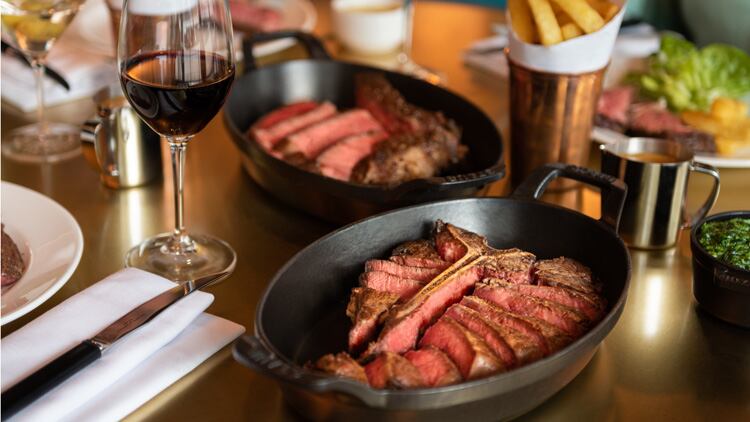
4. The rise of the chef-led bakery
It may be a tough time for the eating out sector, but the out-of-home bakery market is proving impressively resilient. According to data from Lumina Intelligence, the total UK eating out market reached £91.5bn in 2022, just 0.6% ahead of 2019 levels. In contrast, though, the coffee, bakery-led and sandwich channel outperformed the total market, totalling £10.5bn in 2022 – 9.8% ahead of its 2019 total.
These figures, of course, apply primarily to the larger food-to-go groups that dominate the market, but also helping bolster the segment is the rise of a new kind of a bakery; one that is independent and led by chefs who cut their teeth working through the ranks of restaurant kitchens. Arguably the most anticipated opening within this emerging space is Quince, the forthcoming Islington bakery led by chef Anna Higham and hospitality professional Paris Barghchi.
Higham - who has a CV that includes stints at Gordon Ramsay’s Petrus and The River Café - describes her vision for Quince as being ‘a traditional British bakery’. “For a long time, bakeries here have been heavily influenced by French and North American baking. The sourdough a lot of bakeries make is Tartine sourdough (a top bakery in San Francisco). There’s also plenty of influences from Danish baking. But we have such a rich and amazing baking culture and history here in the UK, and there’s so much room to explore that.” Bread will be the cornerstone of Quince’s offer, made exclusively with UK-grown stoneground flour alongside yeasted buns baked each morning, oat cookies, and wholegrain palmiers. There will also be wholegrain hand-pies with sweet and savoury fillings, tarts, and gluten-free cake available by the slice.
Surprisingly, one thing that won’t be on the menu, is croissants. Despite its seemingly endless popularity with consumers, in Higham’s eyes the laminated French pastry is not a breadwinner. “I’ve been thinking about creating a business that’s sustainable for me in the long term,” she explains. “And that means we need products with a good gross profit. Croissants take up a lot of time, people, power, space and butter, and the markup is hardly worth it."
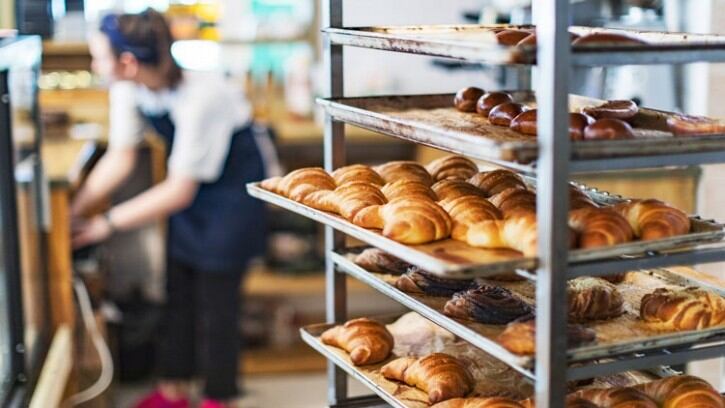
5. 3.4% beers becoming ‘a thing’
This year will see the biggest reform of alcohol duty for more than 140 years as the Government looks to further incentivise producers to come up with lower alcohol alternatives. From next month, the upper threshold for Low Strength Duty is rising from 2.8% to 3.4%. That might not sound like a lot, but having an extra 0.6% ABV to play with will make it far easier for brewers to create light beers that people actually want to drink.
Beers that are between 3.5% and 4% are likely to be revisted to take advantage of the tax break, but breweries are also launching new products into the space. Take Estrella Damm’s Rosa Blanca. While not strictly a new product - the brand was founded in Mallorca in 1927 - it is now being brought to the UK as a 3.4% beer. Soon to be available in draught, bottle and can format, the straight-forward Citra-hopped lager is billed by Damm as ‘the super-premium offering for the sub 3.5% segment’.
The Government’s changes to duty are also likely to pave the way for a renaissance in brewpubs due to an obscure benefit that used to only apply to cider producers now applying to those brewing beer for the first time. Microbrewers that produce under five hectolitres of pure alcohol - equivalent to about 20,000 pints - won’t have to pay an beer duty at all. Cheers!
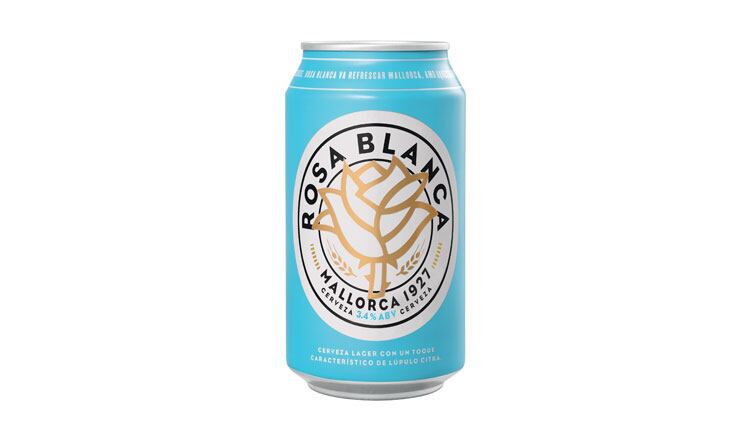
6. Fish stands in for meat
Fin-to-tail cookery is not a new concept per se but a push to reduce food waste and diners increasingly eschewing meat has seen more and more UK chefs channel their inner Josh Niland. London Shell Co. head chef Fede Pollame has created a clever sausage roll-like object made with trout that is served at both his own restaurants and recently launched Kentish Town gastropub The Parakeet. The smash-hit dish has a flavour and texture that’s reminiscent of a pig-based sausage roll thanks to the use of the same spices and a clever mix of fatty parts of the trout, white fish and a small amount of vegetarian suet to further increase the fat content.
“We’re using the bellies of the trout and the tails which are naturally high in fat, but without the suet it would be dry. The way we make it, it’s pretty much free because it’s all stuff that would either go in the bin or be used as staff food,” says Pollame, who is also working on a fish black pudding recipe with Stoke Newington-based fishmonger Danny Mustard. Made using the fat cap and bloodline from a whole tuna - the latter can weigh up to a kilo and is traditionally thrown in the bin - their creation isn’t fishy as such but has a 'marine flavour'.
Other chefs to serve fish in a meat-like manner include José Pizarro, who is currently offering a menu constructed around sustainably-caught tuna at his flagship Pizarro in Bermondsey that includes marinated tuna ribs with garlic, parsley, white wine and fried potatoes.
Incidentally Niland - who burst onto the culinary scene about five years ago with innovative recipes that showed that with a little bit of effort nearly any bit of a fish can be rendered edible - will soon release a new book. Published by Hardie Grant, Fish Butchery will feature recipes for cured-fish salami, fish bacon and even fish mortadella.
7. Soft drink pairings go mainstream
Wine pairings have long been a mainstay of the drinks offering at tasting menu restaurants, but with growing thirst from consumers for more low/no alcohol options, more and more places are beginning to also offer a soft pairing. Now, we’re not talking about ceviche being paired with Fanta Lemon or Japanese A5 Wagyu with Coca Cola Zero here, soft drinks pairings in this context often refer to a range of kombuchas, teas and tonics designed to complement food in a similar vain to the more conventional wine pairings.
Take Moor Hall, chef Mark Birchall’s two Michelin-starred Lancashire restaurant, which offers an £85 alcohol-free pairing that ‘consists of some of the world’s finest teas’. “Teas are treated like we would treat wine, working with terroirs, vintages, and appellations,” the restaurant says. Then there’s Timberyard in Edinburgh, which runs an extensive soft drinks programme in house with options including smoked cola tea; blackcurrant tonic; and a negroni kombucha.
This is not a trend that’s exclusive to the high-end restaurant scene, either; its appeal is becoming much broader. Synergy Flavours is one of the companies looking to ‘optimise dining experiences’ by crafting flavour pairings for premium soft drinks and alcohol-free beverages that complement some of the UK’s favourite global cuisines, including Indian, Italian, Greek, British, Chinese, and Thai.
The new flavour combinations include a mango, lime, and mint blend, which complements the flavours typically found in Indian cuisine; and pineapple, coconut, and lemongrass, to work in harmony with the flavours of Thai dishes. A Good Sense Research report commissioned by Synergy found that 87% of respondents said that they were interested in purchasing a soft drink that would pair with their chosen cuisine. According to the flavour supplier, this demonstrates a clear need and opportunity for both soft drinks and non-alcoholic beverages to add value with more exciting options for 'mindful consumers'.
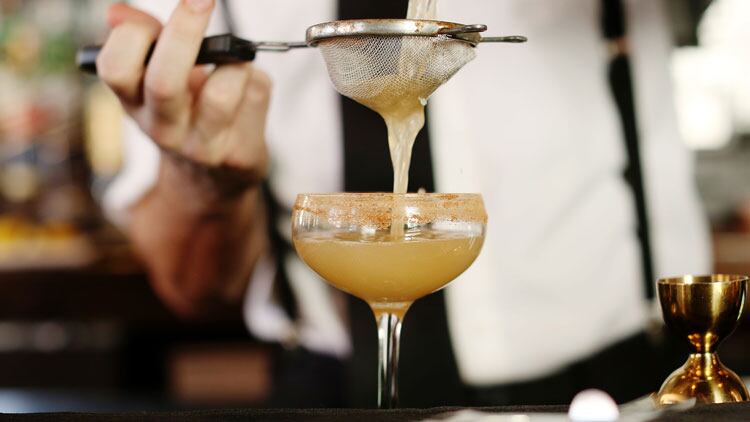
8. The end of hangovers?
A drink that can mimic the effects of alcohol without leaving you with a sore head in the morning? Seems too good to be true (and let’s face it - it is). Sentia describes itself as the ‘world’s first GABA spirit’. For those with blank faces, GABA stands for ‘gamma-aminobutyric acid’; effectively, it’s a neurotransmitter that slows down the brain by blocking specific signals in the central nervous system and, according to Sentia, relates to drinks ‘founded on the scientific understanding of alcohol’s desirable effects’. “GABA Spirits are the world’s first truly functional alcohol-alternative category, comprising a proprietary blend of functional botanical ingredients, designed by the science team at GABA Labs to offer that ‘two drink sweet spot’,” says the brand.
Sentia is the creation of the rather fabulously named Professor David Nutt, an Imperial College neuropharmacologist and former government drugs adviser who’s positioned himself as something of an authority in the world of GABA spirits. As well as Sentia, which comes in two flavours (Red and Black) and is made from a mix of water and botanical extracts, Nutt is in the process of trying to get approval from regulators for a new synthetic alcohol molecule called Alcarelle, which he says could be used as an alternative to ethanol – the core compound ingredient in most alcoholic drinks – and allow people to enjoy the positive effects of booze (the buzz, the relaxation, the lowering of inhibitions in talking to strangers at a party) without the health implications, without losing control, and without the hangovers. If anyone’s asking, ours’ is a double Alcarelle on the rocks, with a twist.

